16 F. high in the Twin Cities Thursday.
23 F. average high on January 8.
4 F. high on January 8, 2014.
3" snow fell yesterday at MSP International Airport.
2.5". Old 24-hour snowfall record for January 8 (1909).
January 8, 1982:
Both January 9th and 10th saw some of the coldest windchills ever seen
in Minnesota. Temperatures of -30 and winds of 40mph were reported in
Northern Minnesota. This would translate to windchills of -71 with the
new windchill formula, -100 with the old formula.
January 8, 1934:
Sleet and ice storm over southwest Minnesota. Hardest hit was Slayton,
Tracy and Pipestone. The thickest ice was just east of Pipestone with
ice measuring 6 to 8 inches in diameter. At Holland in Pipestone County
three strands of #6 wire measured 4.5 inches in diameter and weighed 33
ounces per foot. The ice was described as: "Very peculiar information
being practically round on three sides, the lower side being ragged
projectiles like icicles: in other words pointed. The frost and ice were
wet, not flaky like frost usually is. In handling this, it could be
squeezed into a ball and did not crumble."
Not Warm
"How
do you people live up there!" How many times have you heard that
refrain? Pick your poison. It is true that Minnesotans have to turn up
the thermostat and slap on a few extra layers. At least we don't have to
worry about Texas-size hurricanes submerging our homes every few years,
or desert heat capable of melting sunglasses, or earthquakes turning
our yards into quivering jelly.
Every spot has it's challenges and sporadic natural disasters, with the possible exception of Maui.
Today
will be a poignant reminder that there really is nothing between
Minnesota and the North Pole but a barbed-wire fence. Bitter exhaust
behind yesterday's clipper pulls the wind chill at the bus stop down to
-25, even -30F this morning. At least the sun will be out.
Did I
mention we've picked up 13 minutes of daylight since December 21? No
robins showing up on Doppler, but average high temperatures start to
trend upward again on January 19.
So will the actual temperature,
reaching 30s by late next week; maybe 40 degrees a week from Sunday. If
it weren't for neighbors with telephoto lenses and Twitter I'd be
tempted to take off my shirt and do some grilling.
Enjoy our fine, mosquito-free weather!
* photo courtesy of
Steve Burns Photography.
Amazingly Bad For 3 Inches.
The temperature of a snowstorm can be a much bigger factor than how
many inches falls. When it's this cold not only does the snow blow and
drift, but MnDOT's chemicals don't work very well melting snow, and
wheel-track glazing causes warm tires to melt snow, which instantly
refreezes into glaze ice. So it becomes basically impossible for road
crews to keep up. Believe it or not 8" of snow at 28F creates much
better highway conditions than 3" at 10F. For snowfall amounts click
here, courtesy of the
Twin Cities National Weather Service.
A Hopeful Extended Outlook.
Yes, at some point Canada runs out of cold air - and winds aloft swing
around to the west or southwest. At least the sun will be out today as
temperatures struggle above zero in the metro. Teens will feel absurdly
good tomorrow and Sunday before the next downturn early next week, but
not as cold as this. By the end of next week European guidance hints at
30s, maybe 40F a week from Saturday.
A Moderating Outlook.
GFS 500 mb winds become more zonal within 1 week, pushing 20s and 30s
back into Minnesota. The southern branch of the jet stream becomes more
active, and one of those storms may throw a shield of snow north into
Minnesotay the last week of January. We're due. Source: GrADS:COLA/IGES.
Emerging From Hibernation.
GFS data from NOAA shows 20s and 30s from January 16 to 24; a
tantalizing potential for more significant snow by January 22. I'll
believe it when I see it, but if a trough of Pacific low pressure does
turn winds aloft around to the southwest we could finally get a a real
storm.
Dealing With Cold Weather Injuries. This seems like a good week to be reviewing the basics; here's an excerpt of a good recap from
U.S. News and World Report: "...
Children
and people older than 50 should take frequent breaks from the cold. And
people of all ages should take steps to reduce their risk for injuries
and illnesses associated with exposure to the cold, cautioned NATA in
the Journal of Athletic Training. Among their recommended precautions:
Winter athletes aren't the only people at risk of cold-related injuries,
according to NATA. Those who play traditional team sports with seasons
that last into early winter or begin in early spring, military
personnel, public safety or public service personnel and construction
workers have a higher risk of cold-related injuries..."
Do Plants Feel The Wind Chill? Short Answer Is No. Here's an excerpt of a blog post from Jack Falker in Edina who updates
The Minnesota Rose Gardener. It's a little like the proverbial: "does my Lexus feel the wind chill?" Unless it sweats, perspires, the answer is no: "...
Wind
chill has no meaning for plants. Unlike warm-blooded animals, they
don't try to maintain a particular body temperature year-round". And another:
"Of course, we know that roses feel the winter cold and die back
according to the level of protection afforded them. And winter-winds
do, of course, have an effect on that die-back, desiccating the canes,
but the important thing to understand is that wind does not make a plant
"feel" colder than the actual temperature, even though it shortens the
time it takes for the plant to reach that temperature..."
NOAA Announces Significant Investment In Next Generation of Supercomputers. Some good news coming out of NOAA; here are a few excerpts of a
Tuesday press release: "
Today,
NOAA announced the next phase in the agency’s efforts to increase
supercomputing capacity to provide more timely, accurate, reliable, and
detailed forecasts. By October 2015, the capacity of each of NOAA’s two
operational supercomputers will jump to 2.5 petaflops, for a total of 5
petaflops – a nearly tenfold increase from the current capacity. Ahead
of this upgrade, each of the two operational supercomputers will first
more than triple their current capacity later this month (to at least
0.776 petaflops for a total capacity of 1.552 petaflops). With this
larger capacity, NOAA’s National Weather Service in January will begin running an upgraded version of the Global Forecast System
(GFS) with greater resolution that extends further out in time – the
new GFS will increase resolution from 27km to 13km out to 10 days and
55km to 33km for 11 to 16 days. In addition, the Global Ensemble Forecast System
(GEFS) will be upgraded by increasing the number of vertical levels
from 42 to 64 and increasing the horizontal resolution from 55km to 27km
out to eight days and 70km to 33km from days nine to 16..."
Look At How Cheap Gas Is Everywhere.
Huffington Post has the story; here's a clip: "...
Even where the map is light-orange and yellow, gas is cheaper than $2.50 per gallon. Here's a link
to the interactive version of GasBuddy's map, where you can search for
prices by ZIP code, city or state. The national average price of a
gallon of gasoline was $2.18 as of Tuesday morning, according to
GasBuddy. That's the lowest since 2009, when the economy was still
climbing out of the hole of the financial crisis and Great Recession..."
In A World of Phones Gadgets Must Adapt.
Remember stand-alone navigation systems, even "cameras"? Now many of us
rely on one device, our pocket computers (formerly known as "phones")
to do just about everything. From gadgets to apps,
The New York Times reports on the implications of this brave new tech landscape; here's a clip: "...
But
the travails of CES are a symptom of a larger transformation in tech.
The era dominated by consumer electronics — what most of us call gadgets
— is in turmoil. One reason is that many devices have been superseded
by a single, all-powerful tool: the smartphone. Today, just about
everything that once required a small, dedicated electronic device —
from cameras to portable game consoles to GPS navigators to music
players to too many others to name — works better as an app on a phone..."

Manila Would Like Just About Everyone To Wear Diapers For The Pope's Visit Next Week. Trust me, this is going to become a trend. Because getting up off the sofa is hard!
Quartz has the squishy details: "...
A
chronic shortage of portable toilets has prompted Francis Tolentino,
chairman of the Metropolitan Manila Development Authority, to resort
to extreme measures during Pope Francis’ visit to the Philippines next
week: Recommending adult diapers for traffic police and many of the millions of people expected to attend an open-air mass in the heavily Catholic country..."
Photo credit above: "A
Filipino man sells shirts with images of Pope Francis for 150 pesos
each ($3) outside a church in downtown Manila, Philippines, Sunday, Jan.
4, 2015. Pope Francis will visit this predominantly Catholic country on
Jan. 15-19." (AP Photo/Aaron Favila).
TODAY: At least the sun is out. Windy and bitter. NW 10-20. Wind chill: -20 to -25. High: 3
FRIDAY NIGHT: Mostly clear and cold. Low: -11
SATURDAY: Cold start, clouds increase. High: 13
SUNDAY: Some sun, still colder than average. Wake-up: 1. High: 11
MONDAY: Partly sunny, light winds. Wake-up: -5. High: 6
TUESDAY: Patchy clouds, not as chilling. Wake-up: -2. High: 15
WEDNESDAY: More clouds than sun, tolerable. Wake-up: 9. High: 21
THURSDAY: Gray but relatively mild. Wake-up: 14. High: 28
* highs surge into the 30s by the end of next week.
Climate Stories...
17 U.S. Cities On Track For Hottest Year (2014).
MSN News has the story; here's an excerpt: "...
Perhaps
not surprisingly, the five states with record-setting cities - Arizona,
California, Nevada, Oregon and Washington - are all on track for one of
their 5 warmest years. Of those five states, California has 10 of the
17 hottest cities, in part because it's such a huge urban state, but
also because the heat there has been so extreme this year. As of
November, the state was running about 2 F. above its previous hottest
year, a surprisingly high margin in a world where temperature records
are usually set by tenths or hundredths of degrees..."
EPA Chief: Arguing Climate Change is "Kind of Nuts". Amen. Here's a clip from
azcentral.com: "...
McCarthy
said that while the vast majority of scientists agree that the climate
is changing, the scientific community doesn't always do a good enough
job of explaining those changes and their impact to the public. She said
it was important to make that point to the general public because the
cost of inaction was great. "Science is under attack like it has never
been before," McCarthy said. "Now is not the time for us to hide or to
begin to be more quiet. It's the time for us to embrace this challenge..." (Source: WMO).
Survey Finds Doctors Concerned About Impacts of Climate Change on Patient Health. Here's a snippet from a story at
Huffington Post that got my attention: "...
A survey of members of the American Thoracic Society,
which represents 15,000 physicians and other medical professionals who
work in the fields of respiratory disease, critical care and sleep
disorder, finds that the majority of respondents said they were already
seeing health effects in their patients that they believe are linked to
climate change. Seventy-seven percent said they have seen an increase in
chronic diseases related to air pollution, and 58 percent said they'd
seen increased allergic reactions from plants or mold. Fifty-seven
percent of participants said they'd also seen injuries related to severe
weather..."
Henry Cisneros: We're Hitting "Point of No Return" on Climate Change. NBC News has the interview; here's an excerpt: "...
We're
moving toward points of no return where the cumulative effect of the
damage becomes a spiral downward from which the systems cannot recover,
so issues like rising sea levels or exorbitant heating or historic level
droughts take on multiple dimensions beyond the initial and that's the
danger of trying to duck the conversation the way many are trying to do
today..." (Source: IPCC).
Deniers Are Not Skeptics: Sign The Petition. Here's an excerpt from
Forecast the Facts: "
Some
members of the media are still misleading the public by wrongly using
the term “skeptic.” The New York Times, for example, recently called
Senator James Inhofe (R-OK) a skeptic — even though he believes that
climate change is “the greatest hoax ever perpetrated.” Scientists
should practice and promote scientific skepticism, and encourage
informed citizens do the same. But those who reject the facts on climate
change are not skeptics — they’re deniers..."
Global Warming Changing Winter Cleanup, Says City of Montreal. More ice, less snow, a trend we're seeing more of during midwinter months over northern latitudes. Here's an excerpt from
CBC News:
"...Montreal crews have already spread their third round of salt and
abrasives, but it hasn't stopped hundreds of Montrealers from slipping
on icy sidewalks. “We are doing everything we can to address the
situation. We were told that there was 500 people that were rushed to
different hospitals across the city because of fractures. For me that's
500 more than the target which was zero,” said Chitilian..."
Bill Nye: 2015's Biggest Health Issue Is Climate Change.
Weather.com
has the story - here's an excerpt: "...Of course, climate change might
be linked to some severe weather patterns, such as storms, cold snaps
and heat waves, all acute dangers to health and livelihood. If you have
noticed your allergies
always seem to be getting worse, that's likely because of longer pollen growing seasons, a side effect to a warmer planet, allergist believe. Then there's
the spread of disease,
such as the chikungunya virus, a mosquito-borne illness once only found
in Africa and Asia that hit the Americas in late 2013 and was first
locally acquired in the United States in 2014. Warmer seasons spread the
habitat of disease-carrying mosquitos and other insects, such as the
ticks that carry Lyme disease..." (Image: NASA).
Oceanographers
have just identified the US coastal regions likely to experience 30
days or more of “nuisance” flooding every year.
And the answer is that
most of the American coast will experience high waters that are 30-60 cms above local high tides, at least 30 times a year.
Nuisance
flooding means just that − somewhere between an inconvenience and
modest damage. But climate change, and its attendant sea-level rise,
will make them much more frequent, and possibly more damaging.
- See more at: http://www.rtcc.org/2015/01/06/us-coastal-cities-face-daily-flooding-by-mid-century-noaa/#sthash.qxqpMsQv.dpuf
Heat And Wildfires in Australia. Climate Nexus has a good summary of the trends Down Under; here's an excerpt: "
As firefighters work to contain the worst bushfire in southern Australia for thirty years, Australia’s Bureau of Meteorology (BoM) released its 2014 annual climate statement,
which, like the destructive fires, signals that climate change is
already a reality in Australia. While heat waves and bushfires are
common during Australia’s hot summer months, climate change is worsening
the underlying conditions that fuel the most extreme heat and wildfire
events. Important top lines to note include:
- Climate change is causing higher temperatures and drier conditions in Australia.
- Climate change is leading to more destructive extreme heat events and bushfires..."
Australia Is Burning, And Climate Change Is Making It Worse.
Bloomberg Businessweek has the story.
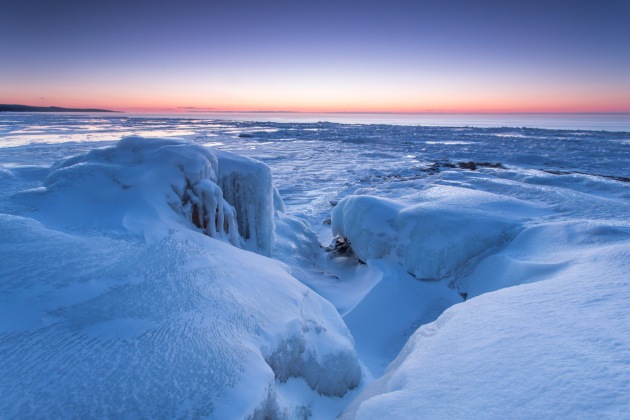
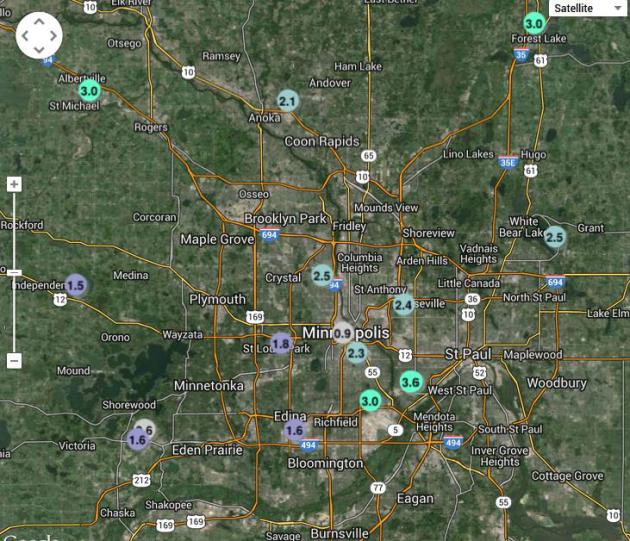
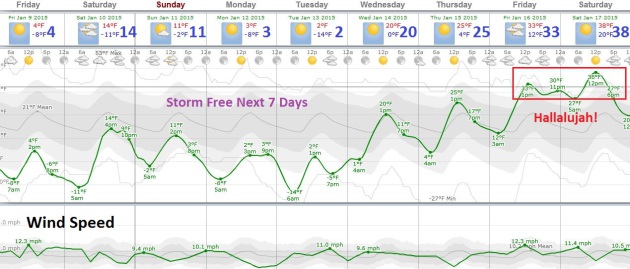
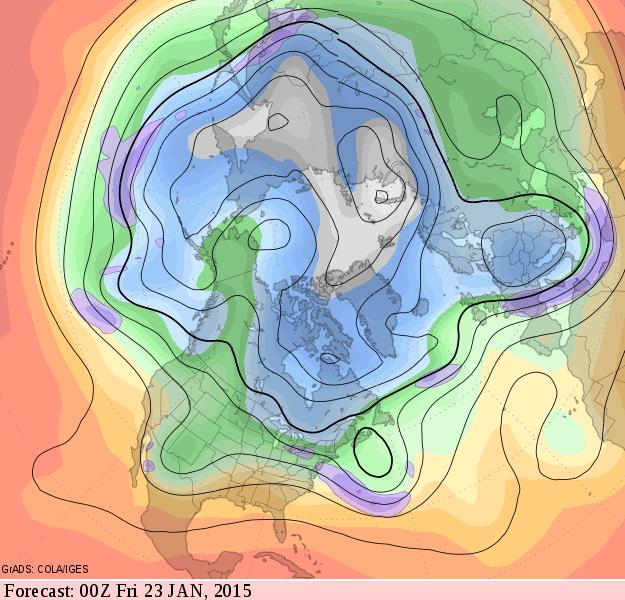
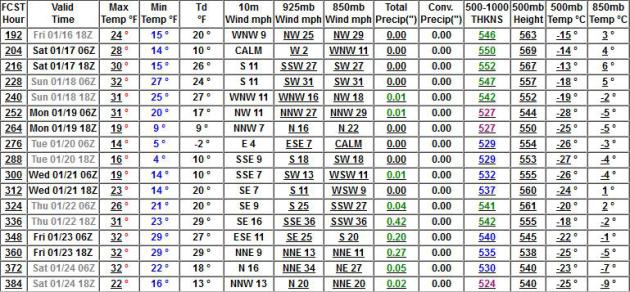
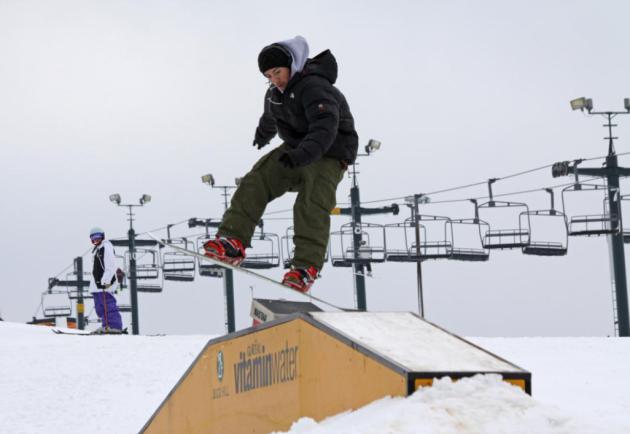
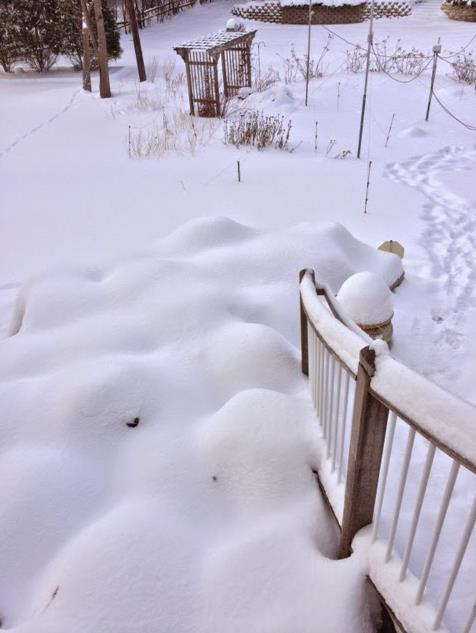


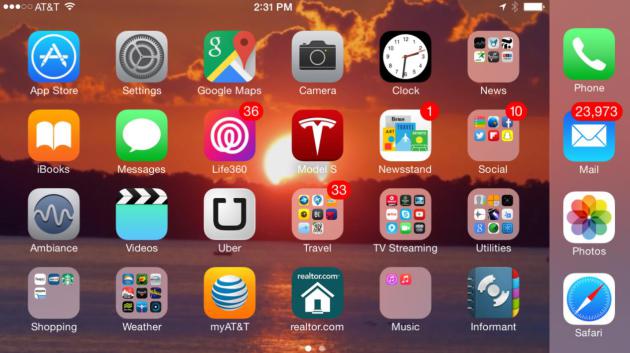



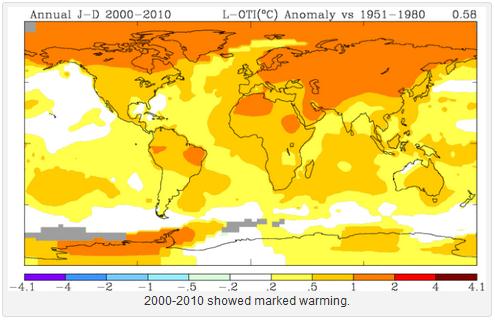
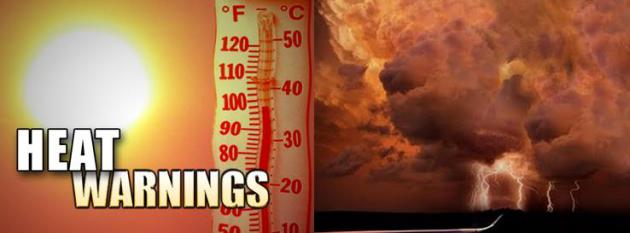
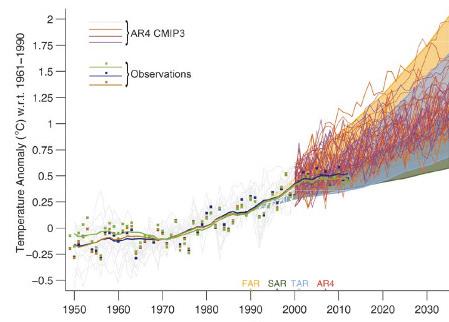




No comments:
Post a Comment